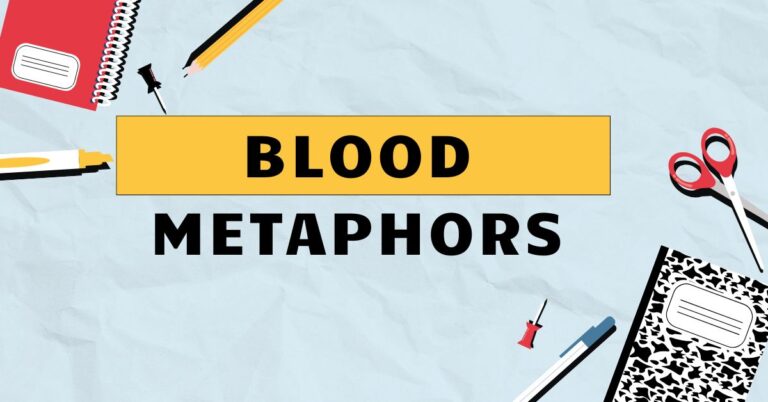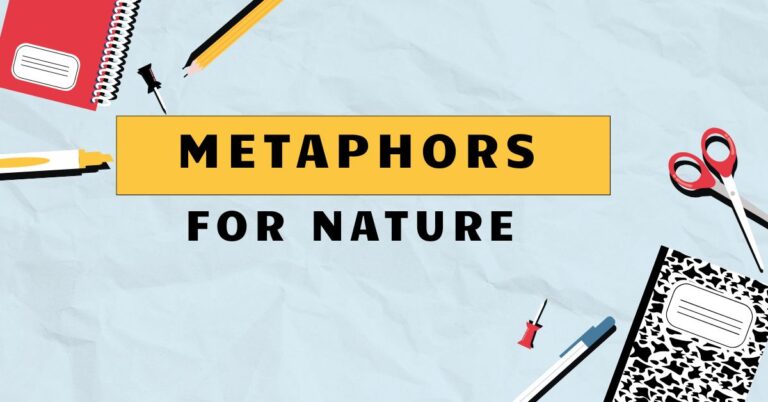45 Metaphors for Lonely: A Comprehensive Guide
Understanding how to express loneliness metaphorically adds depth and nuance to your writing and speech. This article explores the various metaphors used to describe loneliness, providing a comprehensive guide for English language learners and native speakers alike.
By examining different types of metaphors and their usage, you’ll gain a richer understanding of this complex emotion and how to articulate it effectively. This guide will benefit students, writers, and anyone looking to enhance their communication skills by learning to express feelings of loneliness with precision and creativity.
Table of Contents
- Introduction
- Definition of Metaphor and Loneliness
- Structural Breakdown of Loneliness Metaphors
- Types of Metaphors for Loneliness
- Examples of Metaphors for Loneliness
- Usage Rules for Metaphors of Loneliness
- Common Mistakes When Using Loneliness Metaphors
- Practice Exercises
- Advanced Topics in Metaphorical Language
- Frequently Asked Questions
- Conclusion
Definition of Metaphor and Loneliness
Ametaphoris a figure of speech that directly compares two unrelated things, asserting that they are the same for the purpose of creating a vivid image or conveying a deeper meaning. Unlike similes, which use “like” or “as” to make a comparison, metaphors state the comparison directly.
The power of a metaphor lies in its ability to transfer qualities from one concept to another, offering new insights and perspectives.
Lonelinessis a complex emotional state characterized by feelings of isolation, disconnection, and a sense of being alone or apart from others. It is a subjective experience, meaning that it’s not simply about being physically alone but rather about feeling emotionally or socially disconnected.
Loneliness can stem from various factors, including lack of social connections, loss of a loved one, or feelings of being misunderstood or unaccepted.
When we combine these two concepts, using metaphors to describe loneliness, we gain a powerful tool for expressing the often intangible and deeply personal feelings associated with this emotion. Metaphors can help us articulate the weight, the emptiness, or the ache of loneliness in a way that resonates with others and allows for a deeper understanding.
Structural Breakdown of Loneliness Metaphors
Metaphors for loneliness typically involve mapping the characteristics of loneliness onto something more concrete and relatable. This process involves several key elements:
- The Tenor: This is the subject being described, in this case, “loneliness.”
- The Vehicle: This is the object or concept used to describe the tenor. It’s what loneliness is being compared to (e.g., a desert, a shadow).
- The Ground: This refers to the shared characteristics between the tenor and the vehicle. It’s the basis of the comparison (e.g., a desert is vast and empty, just like the feeling of loneliness).
- The Tension: This is the element of incongruity or surprise that makes the metaphor effective. It’s the unexpected connection that creates a new understanding of loneliness.
For example, in the metaphor “Loneliness is a vast desert,” the tenor is loneliness, the vehicle is a desert, and the ground is the shared characteristic of emptiness and isolation. The tension arises from equating an emotion with a physical landscape, highlighting the overwhelming and desolate nature of loneliness.
Understanding these structural elements allows us to analyze and create effective metaphors for loneliness. By carefully selecting the vehicle and highlighting the shared ground, we can craft metaphors that resonate with authenticity and emotional depth.
Types of Metaphors for Loneliness
Loneliness can be expressed through a wide range of metaphorical categories, each offering a unique perspective on this complex emotion.
Spatial Metaphors
Spatial metaphors use concepts of space and location to represent loneliness. These metaphors often evoke feelings of being lost, isolated, or trapped in a particular place.
Weather Metaphors
Weather metaphors connect loneliness to various weather conditions, such as rain, storms, or coldness. These metaphors often convey the mood or atmosphere of loneliness.
Object Metaphors
Object metaphors use inanimate objects to symbolize loneliness. These metaphors can represent the feeling of being broken, empty, or disconnected.
Animal Metaphors
Animal metaphors associate loneliness with the characteristics of certain animals, such as wolves, owls, or stray dogs. These metaphors often emphasize feelings of isolation and vulnerability.
Sensory Metaphors
Sensory metaphors use sensory experiences, such as silence, darkness, or coldness, to depict loneliness. These metaphors focus on the physical sensations associated with feeling alone.
Examples of Metaphors for Loneliness
To illustrate the different types of metaphors for loneliness, here are several examples categorized by their type. These examples showcase the diverse ways in which loneliness can be expressed metaphorically.
Spatial Metaphor Examples
Spatial metaphors use location and space to describe the feeling of loneliness. They often highlight the feeling of being isolated or trapped.
The table below presents various spatial metaphors for loneliness.
| Metaphor | Explanation |
|---|---|
| Loneliness is an empty room. | Suggests a feeling of hollowness and lack of connection. |
| Loneliness is an island. | Implies being isolated and cut off from others. |
| Loneliness is a deep well. | Conveys a sense of being trapped and unable to escape. |
| Loneliness is a vast ocean. | Highlights the overwhelming and boundless nature of loneliness. |
| Loneliness is a solitary path. | Suggests a journey taken alone, without companionship. |
| Loneliness is a corner of the world. | Implies being in a remote and forgotten place. |
| Loneliness is a walled garden. | Conveys a sense of being enclosed and separated from the outside world. |
| Loneliness is a dark alley. | Suggests a feeling of being lost and vulnerable. |
| Loneliness is a deserted city. | Highlights the absence of life and connection. |
| Loneliness is a forgotten attic. | Implies being neglected and out of sight. |
| Loneliness is a secluded cabin in the woods. | Conveys a sense of voluntary isolation, yet still feeling alone. |
| Loneliness is the edge of the world. | Suggests being on the brink of something, yet utterly alone. |
| Loneliness is a maze with no exit. | Implies feeling lost and unable to find a way out. |
| Loneliness is a bridge to nowhere. | Conveys a sense of connection that leads to nothing. |
| Loneliness is a shadow that follows. | Suggests that loneliness is always present, like a constant companion. |
| Loneliness is a ghost town. | Highlights the desolation and abandonment of a place. |
| Loneliness is a prison cell. | Implies being confined and trapped by one’s own feelings. |
| Loneliness is a distant star. | Conveys a sense of being far away and unreachable. |
| Loneliness is a road less traveled. | Suggests a path that few others take, leading to isolation. |
| Loneliness is a silent room in a noisy house. | Highlights the contrast between outward appearance and inner feelings. |
| Loneliness is the space between words unspoken. | Implies a gap in communication that leads to isolation. |
| Loneliness is the corner seat on a crowded bus. | Conveys a sense of being physically present but emotionally detached. |
| Loneliness is a lighthouse on a deserted shore. | Suggests a beacon of hope that no one sees. |
Weather Metaphor Examples
Weather metaphors use different weather conditions to convey the feeling of loneliness. They often highlight the emotional atmosphere associated with feeling alone.
The table below presents various weather metaphors for loneliness.
| Metaphor | Explanation |
|---|---|
| Loneliness is a cold rain. | Suggests a feeling of sadness and isolation. |
| Loneliness is a dark cloud. | Implies a sense of gloom and depression. |
| Loneliness is a winter storm. | Conveys a feeling of being overwhelmed and battered by emotions. |
| Loneliness is a silent fog. | Highlights the feeling of being lost and disoriented. |
| Loneliness is a dry desert. | Suggests a lack of emotional nourishment and connection. |
| Loneliness is a freezing wind. | Implies a chilling and isolating experience. |
| Loneliness is a perpetual twilight. | Conveys a sense of never-ending sadness. |
| Loneliness is a sudden downpour. | Suggests an unexpected and overwhelming feeling of isolation. |
| Loneliness is a barren landscape after a storm. | Highlights the desolation and emptiness left behind. |
| Loneliness is a constant drizzle. | Implies a persistent and nagging feeling of sadness. |
| Loneliness is a heatwave in the city. | Conveys a sense of oppressive isolation amidst activity. |
| Loneliness is an endless winter. | Suggests a prolonged period of sadness and isolation. |
| Loneliness is a thunderclap in the night. | Implies a sudden and shocking feeling of being alone. |
| Loneliness is a rainbow no one sees. | Conveys a sense of hidden beauty and missed opportunities. |
| Loneliness is a hurricane inside. | Suggests a turbulent and destructive emotional state. |
| Loneliness is the calm before the storm. | Highlights the anticipation and dread of feeling alone. |
| Loneliness is a snowflake in a warm hand. | Implies fragility and the feeling of disappearing. |
| Loneliness is a sunless day. | Conveys a lack of warmth and happiness. |
| Loneliness is the first frost of winter. | Suggests a chilling and isolating experience. |
| Loneliness is an echo in a canyon. | Highlights the feeling of being unheard and unanswered. |
| Loneliness is a gentle breeze through an empty house. | Implies a subtle yet persistent feeling of emptiness. |
| Loneliness is a moonless night. | Conveys a sense of darkness and lack of guidance. |
| Loneliness is a broken thermometer. | Suggests an inability to gauge one’s emotional temperature. |
Object Metaphor Examples
Object metaphors use inanimate objects to represent the feeling of loneliness. These metaphors often emphasize feelings of being broken, empty, or disconnected.
The table below presents various object metaphors for loneliness.
| Metaphor | Explanation |
|---|---|
| Loneliness is a broken mirror. | Suggests a fragmented sense of self and isolation. |
| Loneliness is an empty vase. | Implies a lack of fulfillment and connection. |
| Loneliness is a rusty key. | Conveys a sense of being unable to unlock connection and belonging. |
| Loneliness is a silent telephone. | Highlights the lack of communication and connection. |
| Loneliness is a blank page. | Suggests a lack of purpose and direction. |
| Loneliness is a hollow shell. | Implies a feeling of emptiness and vulnerability. |
| Loneliness is a shattered window. | Conveys a sense of being broken and exposed. |
| Loneliness is a flickering candle. | Suggests a fragile and fading sense of hope. |
| Loneliness is a worn photograph. | Highlights the fading memories and loss of connection. |
| Loneliness is a closed book. | Implies a lack of understanding and connection. |
| Loneliness is a deflated balloon. | Conveys a sense of lost joy and energy. |
| Loneliness is a broken compass. | Suggests a lack of direction and guidance. |
| Loneliness is a tangled thread. | Implies a feeling of confusion and disconnection. |
| Loneliness is a silent piano. | Conveys a lack of expression and creativity. |
| Loneliness is a ship without a sail. | Suggests a lack of control and direction in life. |
| Loneliness is a clock without hands. | Implies a sense of being lost in time and disconnected from reality. |
| Loneliness is a room full of unopened letters. | Conveys a sense of missed opportunities and unacknowledged connections. |
| Loneliness is a song with no melody. | Suggests a lack of harmony and emotional depth. |
| Loneliness is a shadow puppet show with no audience. | Highlights the feeling of performing for no one. |
| Loneliness is a map with no landmarks. | Implies a lack of orientation and purpose. |
| Loneliness is an old shoe left behind. | Conveys a sense of abandonment and being forgotten. |
| Loneliness is a painting with no color. | Suggests a lack of vibrancy and emotional expression. |
| Loneliness is a statue in a park where no one visits. | Implies a feeling of being unseen and unappreciated. |
Animal Metaphor Examples
Animal metaphors use the characteristics of certain animals to represent the feeling of loneliness. These metaphors often emphasize feelings of isolation and vulnerability.
The table below presents various animal metaphors for loneliness.
| Metaphor | Explanation |
|---|---|
| Loneliness is a lone wolf. | Suggests independence and isolation. |
| Loneliness is a caged bird. | Implies being trapped and unable to connect with others. |
| Loneliness is a stray cat. | Conveys a sense of being unwanted and unloved. |
| Loneliness is a solitary owl. | Highlights a feeling of being watchful and isolated. |
| Loneliness is a lost lamb. | Suggests vulnerability and a need for guidance. |
| Loneliness is a fish out of water. | Implies feeling out of place and disconnected. |
| Loneliness is a silent swan. | Conveys a sense of hidden beauty and isolation. |
| Loneliness is a hermit crab. | Suggests a need for protection and isolation. |
| Loneliness is a firefly in daylight. | Highlights the feeling of being unseen and unappreciated. |
| Loneliness is a bee without a hive. | Implies a lack of belonging and purpose. |
| Loneliness is a turtle without its shell. | Conveys a sense of vulnerability and exposure. |
| Loneliness is a peacock with no audience. | Suggests a need for validation and attention. |
| Loneliness is a spider spinning an empty web. | Implies a feeling of futility and isolation. |
| Loneliness is a butterfly with broken wings. | Conveys a sense of lost freedom and beauty. |
| Loneliness is a scarecrow in an empty field. | Suggests a feeling of being alone and unneeded. |
| Loneliness is a penguin separated from its colony. | Implies a loss of community and belonging. |
| Loneliness is a seagull far from the sea. | Conveys a sense of being out of place and lost. |
| Loneliness is a snail without its slime. | Suggests a lack of protection and vulnerability. |
| Loneliness is a cicada singing to an empty forest. | Highlights the feeling of being unheard and unanswered. |
| Loneliness is a chameleon with no colors to change. | Implies a loss of identity and adaptability. |
| Loneliness is a fox without a den. | Conveys a feeling of homelessness and insecurity. |
| Loneliness is an eagle without a mountain. | Suggests a loss of perspective and purpose. |
| Loneliness is a snake without its skin. | Implies vulnerability and exposure. |
Sensory Metaphor Examples
Sensory metaphors use sensory experiences to depict the feeling of loneliness. These metaphors focus on the physical sensations associated with feeling alone.
The table below presents various sensory metaphors for loneliness.
| Metaphor | Explanation |
|---|---|
| Loneliness is a piercing silence. | Suggests an overwhelming lack of sound and connection. |
| Loneliness is a bitter taste. | Implies an unpleasant and lingering feeling. |
| Loneliness is a heavy weight on the chest. | Conveys a feeling of oppression and sadness. |
| Loneliness is a blurry vision. | Highlights a sense of disorientation and detachment. |
| Loneliness is a dull ache. | Suggests a persistent and nagging feeling of sadness. |
| Loneliness is a cold touch. | Implies a chilling and isolating experience. |
| Loneliness is a muted color. | Conveys a lack of vibrancy and emotional expression. |
| Loneliness is a rough texture. | Suggests an unpleasant and uncomfortable feeling. |
| Loneliness is a lingering scent of absence. | Highlights the feeling of missing someone or something. |
| Loneliness is a faint echo. | Implies a feeling of being unheard and unanswered. |
| Loneliness is a numb sensation. | Conveys a lack of feeling and connection. |
| Loneliness is a stifled breath. | Suggests a feeling of suffocation and oppression. |
| Loneliness is a jarring dissonance. | Implies a lack of harmony and balance. |
| Loneliness is a blinding darkness. | Conveys a sense of being lost and disoriented. |
| Loneliness is a strangled cry. | Suggests a feeling of being unable to express oneself. |
| Loneliness is a hollow sound. | Implies a lack of substance and meaning. |
| Loneliness is a sharp sting. | Conveys a sudden and painful feeling of isolation. |
| Loneliness is a hazy memory. | Suggests a fading connection to the past. |
| Loneliness is a heavy cloak. | Implies a burden that weighs one down. |
| Loneliness is a forgotten melody. | Conveys a loss of joy and harmony. |
| Loneliness is a rough canvas. | Suggests an unfinished and unrefined state. |
| Loneliness is a cracked voice. | Conveys difficulty in expressing oneself. |
| Loneliness is a distant hum. | Implies a subtle yet persistent feeling of isolation. |
Usage Rules for Metaphors of Loneliness
When using metaphors to describe loneliness, it’s important to follow certain guidelines to ensure clarity, effectiveness, and appropriateness.
- Clarity: Ensure that the metaphor is easily understandable and relatable. Avoid obscure or overly complex comparisons that may confuse the reader.
- Relevance: Choose a vehicle that has a clear connection to the feeling of loneliness. The shared characteristics between the tenor and the vehicle should be evident.
- Originality: Strive for originality in your metaphors. Avoid clichés and overused comparisons that may lack impact.
- Consistency: Maintain consistency in your metaphorical language. Avoid mixing metaphors or shifting between different comparisons in a way that is confusing.
- Context: Consider the context in which the metaphor is being used. The appropriateness of a metaphor may depend on the audience, the tone of the writing, and the overall message.
- Emotional Impact: Be mindful of the emotional impact of your metaphors. Choose comparisons that accurately reflect the intended emotion and avoid metaphors that may be insensitive or offensive.
- Avoid Mixed Metaphors: It is generally recommended to avoid mixed metaphors, where you combine two or more unrelated metaphorical images. For example, saying “He’s burning the midnight oil at both ends” combines “burning the midnight oil” (working late) with “burning the candle at both ends” (exhausting oneself), creating a confusing image.
By following these usage rules, you can effectively use metaphors to convey the complex and nuanced feelings associated with loneliness.
Common Mistakes When Using Loneliness Metaphors
Even experienced writers can make mistakes when using metaphors for loneliness. Here are some common errors to avoid:
- Clichés: Using overused and predictable metaphors, such as “lonely as a cloud.”
- Correct: Loneliness is a silent, echoing chamber.
- Incorrect: Loneliness is like a cloud.
- Mixed Metaphors: Combining unrelated images that create confusion.
- Correct: Loneliness is a heavy anchor, dragging me down.
- Incorrect: Loneliness is a heavy anchor, a stormy sea that drowns me.
- Inappropriate Comparisons: Choosing vehicles that are insensitive or offensive.
- Correct: Loneliness is a quiet shadow.
- Incorrect: Loneliness is a festering wound.
- Overly Complex Metaphors: Using comparisons that are too abstract or difficult to understand.
- Correct: Loneliness is a locked door.
- Incorrect: Loneliness is a multidimensional, non-Euclidean construct of existential angst.
- Lack of Connection: Failing to establish a clear relationship between the tenor and the vehicle.
- Correct: Loneliness is a barren field, devoid of life.
- Incorrect: Loneliness is a bicycle.
- Inconsistency: Shifting between different metaphors without a clear purpose.
- Correct: Loneliness is a cold wind, chilling me to the bone. It’s a winter that never ends.
- Incorrect: Loneliness is a cold wind, and also a warm blanket.
By being aware of these common mistakes, you can refine your use of metaphors and create more impactful and meaningful expressions of loneliness.
Practice Exercises
Test your understanding of metaphors for loneliness with these practice exercises.
Exercise 1: Identify the Metaphor
Identify the metaphor in each sentence and explain what two things are being compared.
| Question | Answer |
|---|---|
| 1. Loneliness is a vast, empty theater. | Metaphor: “Loneliness is a vast, empty theater.” Comparison: Loneliness is being compared to a theater to emphasize its emptiness and lack of audience. |
| 2. She felt loneliness like a heavy cloak. | Metaphor: “Loneliness like a heavy cloak.” Comparison: Loneliness is being compared to a heavy cloak to convey a feeling of being weighed down. |
| 3. His heart was an island of loneliness. | Metaphor: “His heart was an island of loneliness.” Comparison: The heart is being compared to an island to emphasize isolation and disconnection. |
| 4. Loneliness is a silent scream. | Metaphor: “Loneliness is a silent scream.” Comparison: Loneliness is being compared to a scream to highlight the intense and unspoken pain. |
| 5. The city was a desert of loneliness. | Metaphor: “The city was a desert of loneliness.” Comparison: The city is being compared to a desert to emphasize the lack of connection and emotional nourishment. |
| 6. Loneliness is a ghost that haunts my days. | Metaphor: “Loneliness is a ghost.” Comparison: Loneliness is compared to a ghost to emphasize its persistent and haunting nature. |
| 7. My soul is a barren landscape of loneliness. | Metaphor: “My soul is a barren landscape.” Comparison: The soul is compared to a barren landscape to highlight emptiness and lack of life. |
| 8. Loneliness is a ship lost at sea. | Metaphor: “Loneliness is a ship lost at sea.” Comparison: Loneliness is compared to a lost ship to convey a feeling of being adrift and without direction. |
| 9. Her smile was a lighthouse in the fog of loneliness. | Metaphor: “Her smile was a lighthouse.” Comparison: The smile is compared to a lighthouse to emphasize its ability to provide guidance and hope amidst loneliness. |
| 10. Loneliness is a song with a broken melody. | Metaphor: “Loneliness is a song with a broken melody.” Comparison: Loneliness is compared to a song to highlight the lack of harmony and emotional depth. |
Exercise 2: Create Your Own Metaphors
Complete the following sentences with your own metaphors for loneliness.
| Question | Answer |
|---|---|
| 1. Loneliness is like __________. | Loneliness is like a room filled with mirrors, each reflecting back only my own image. |
| 2. Feeling lonely is like __________. | Feeling lonely is like walking through a crowded street and realizing you know no one. |
| 3. My heart feels like __________. | My heart feels like a deserted island, with no ships ever coming near. |
| 4. Loneliness tastes like __________. | Loneliness tastes like stale bread, providing no nourishment for the soul. |
| 5. Being alone is like __________. | Being alone is like being a single raindrop in a vast ocean, lost and insignificant. |
| 6. Loneliness sounds like __________. | Loneliness sounds like a ticking clock in an empty house, each tick a reminder of the passing time. |
| 7. Loneliness feels __________. | Loneliness feels like a heavy blanket, smothering any spark of joy. |
| 8. Loneliness is __________. | Loneliness is a shadow that never leaves my side, even in the brightest sunlight. |
| 9. My mind feels __________. | My mind feels like a maze, with each turn leading back to the same empty space. |
| 10. Loneliness makes me __________. | Loneliness makes me a statue in a park, admired from afar but never touched or understood. |
Advanced Topics in Metaphorical Language
For advanced learners, exploring metaphorical language in greater depth can lead to a more nuanced understanding of its power and complexity. Here are some advanced topics to consider:
- Conceptual Metaphor Theory: This theory, developed by George Lakoff and Mark Johnson, suggests that metaphors are not just linguistic devices but fundamental structures of thought. It posits that we understand abstract concepts like loneliness through more concrete experiences, such as spatial relationships or physical sensations.
- Extended Metaphors: An extended metaphor is a metaphor that is sustained over several lines or even throughout an entire work. Analyzing how extended metaphors are used to develop complex themes can enhance your understanding of literature.
- Dead Metaphors: A dead metaphor is a metaphor that has become so common that it is no longer recognized as a figure of speech. Understanding how metaphors can become dead over time can provide insights into language evolution.
- The Role of Culture in Metaphor: Metaphors are often culturally specific, reflecting the unique experiences and values of a particular society. Exploring the cultural dimensions of metaphors can promote cross-cultural understanding.
- Creating Novel Metaphors: Developing the ability to create original and impactful metaphors requires a deep understanding of language, culture, and human psychology. Experimenting with different types of comparisons and exploring the boundaries of metaphorical language can enhance your creativity.
By delving into these advanced topics, you can gain a deeper appreciation for the art and science of metaphorical language.
Frequently Asked Questions
Here are some frequently asked questions about metaphors for loneliness:
- What is the difference between a metaphor and a simile?
- Why are metaphors effective in describing loneliness?
- How can I avoid using clichés when creating metaphors for loneliness?
- Can a metaphor be too complex or confusing?
- Are there any cultural differences in how loneliness is expressed metaphorically?
A metaphor directly compares two unrelated things, stating that one thingisanother. A simile, on the other hand, uses “like” or “as” to make a comparison, indicating that one thing issimilarto another.
For example, “Loneliness is a dark cloud” is a metaphor, while “Loneliness is like a dark cloud” is a simile.
Metaphors are effective because they allow us to express abstract and complex emotions in a more concrete and relatable way. By comparing loneliness to something tangible, such as a desert or an empty room, we can evoke a stronger emotional response and create a deeper understanding.
To avoid clichés, try to think outside the box and explore unique and unexpected comparisons. Consider the specific qualities of loneliness that you want to emphasize and look for vehicles that capture those qualities in
a fresh and original way.
Brainstorming and experimenting with different ideas can help you create more impactful and memorable metaphors.
Yes, a metaphor can be too complex or confusing if it is too abstract or difficult to understand. The goal of a metaphor is to clarify and enhance understanding, not to obscure it.
Choose comparisons that are accessible and relatable to your audience.
Yes, there can be cultural differences in how loneliness is expressed metaphorically. Different cultures may have different symbols, images, and experiences that shape their understanding of loneliness.
Being aware of these cultural differences can help you communicate more effectively with diverse audiences.
Conclusion
Metaphors are a powerful tool for expressing the complex and nuanced emotion of loneliness. By understanding the different types of metaphors, following usage rules, and avoiding common mistakes, you can effectively use metaphorical language to convey the depth and weight of this universal experience.
Whether you are a student, a writer, or simply someone looking to enhance your communication skills, mastering the art of using metaphors for loneliness will enrich your ability to connect with others and articulate the often intangible aspects of the human condition. Embrace the creativity and insight that metaphors offer, and you’ll find new ways to express the profound emotion of loneliness with clarity, authenticity, and emotional resonance.







